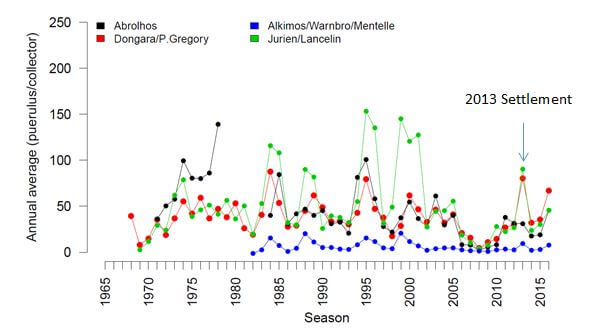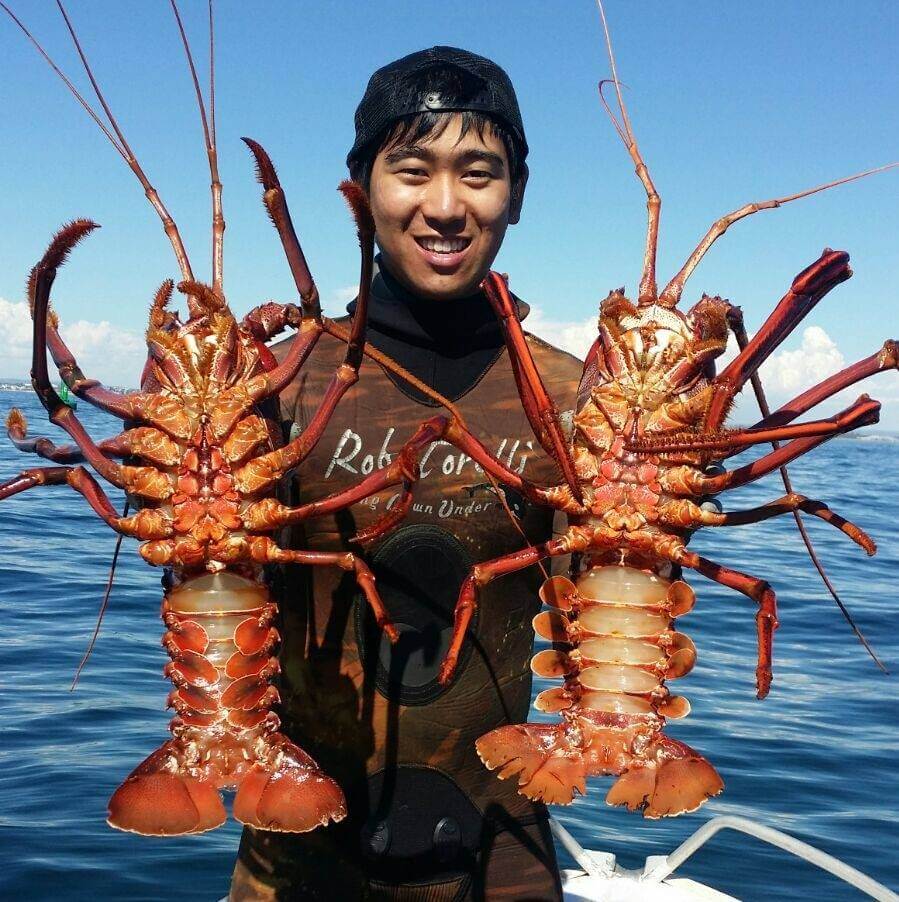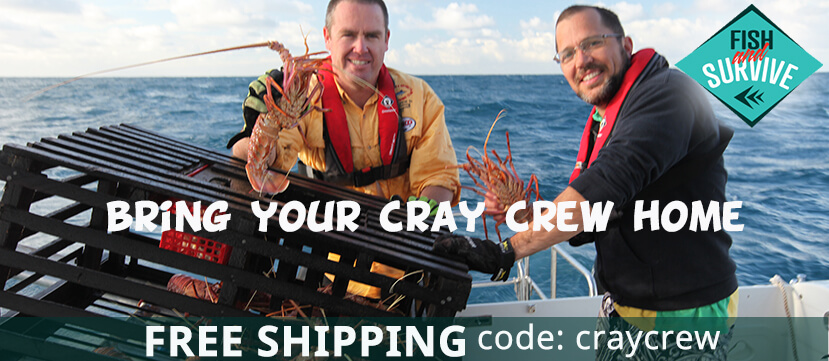Just like the final season of Game of Thrones, the march of the ‘whites’ is approaching.
Unlike the final season of the universally acclaimed show though, we know this upcoming season of the crays run will have a greater reception!
The march of Western rock lobster — more commonly referred to as ‘crays’ — is set to get underway slightly earlier than last year in early to mid-November, according to one of WA’s leading cray experts, DPIRD Principal Research Scientist Dr Simon de Lestang.
It is welcome news for a growing number of more than 56,000 licensed cray fishers, who target this unique West Aussie species that are distributed from around Augusta up to Onslow and feature most prominently between Perth and Geraldton.
Dr de Lestang said the sustained abundance of crayfish and slightly warmer waters than last year is set to fire up the nearshore fishing activity, as the crays begin their annual migration to deeper waters.
“The water temperatures in August and September impact the moulting and start of the whites migration each year. In 2022, the average water temperature during these months was 17.6oC, which was warmer than 2021 when it was 17.1oC, so we can expect the whites to start a bit earlier than last year,” said Dr de Lestang.
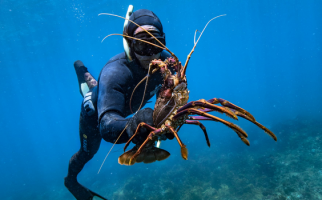
The crayfish crystal ball
Ever wondered how the experts predict the upcoming crayfish run?
DPIRD collect the puerulus — a juvenile stage of a cray — with specialised buoys mimicking natural algae habitat where juvenile crayfish prefer to settle to forecast crayfish abundance each season.
This method allows DPIRD researchers to determine the number of puerulus that have concentrated on these buoys for each new moon period. From these numbers, they can then forecast upcoming recruitment trends and patterns.
The settlement information has a strong correlation with crayfish catches in about four years once the crays have matured to a legal size, so the puerulus numbers from 2018-19 are analysed to allow DPIRD to make an accurate seasonal forecast for 2022-23.
“Based on the puerulus numbers in 2018/2019 we are expecting a similar year to last, so still good solid numbers. A lot of the catches, especially the whites, will be a bit larger than last year as they will not be dominated by a large recruitment,” said Dr de Lestang.
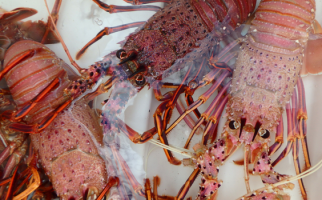
The flight of the whites
The start of the whites run varies each year, although based on previous recordings, the whites usually begin their quest heading in a north-westerly direction around late November and early December.
The reason it is dubbed the ‘whites run’ comes from the colloquial description of crayfish which have freshly moulted with their new soft, pale-coloured shell. Pre-moulted crays are easy to identify as they have a harder, dark red shell.
Juvenile crays settle along inshore rocky habitats and seagrass beds. Once they reach sexual maturity — at about three to four years — they start their migration heading offshore.
During the migration, crays set off towards deeper reef platforms in a north-westerly direction. This annual phenomenon is what has been dubbed by crayfish enthusiasts as the ‘whites run.’
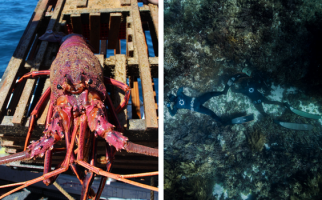
Get your cray pots and loops ready!
Once the crays are anticipated to start their march in around two weeks, potters and divers will venture to the ocean on the surface and below it with a buzz of excitement, hoping to catch a feed of these tasty critters.
One of the benefits to the whites run is this red-hot action takes place relatively close to shore, with shallow reef ledges visible from our beautiful beaches frequently abundant with crays.
“The whites run is an integral and much-loved part of WA’s fishing calendar. Once the word is out that they are being caught nearshore, a lot of keen crayfishers will queue up before sunrise at boat ramps or throw on the wetty and dive the reefs,” said Recfishwest Operations Lead Matt Gillett.
“The nearshore crayfish abundance during the whites run is what underpins this awesome West Aussie fishing experience, it’s entirely unique and special to WA to pull in a pot full of crays or to dive under a rock ledge off our coastline and see dozens of antennules poking out.”
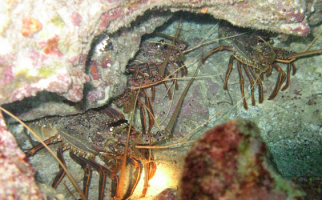
Tips for finding crays for days
For Perth-based fishers who are going for crays this summer, Dr de Lestang suggested good places to start targeting the shallow reef systems off our coastline are areas such as Two Rocks, Mindarie, Rockingham, Garden Island, Rottnest and Mandurah.
The nearshore activity during the annual whites run over summer is why more than half of WA’s recreational cray catch takes place between December and February, which is a testament to great fisheries management helping maintain their sustainability and abundance.
If potting, use a mixture of bait. Soft and oily bait will get the lobster into the pot, while longer lasting tougher bait will keep them there. Ensuring the pot is heavy also improves your odds as crays will be reluctant to get inside if it moves. Wood pots will start to fish better once they have been able to ‘soak’ for a day or two.
If diving, the start of the whites run can be the most effective time to duck beneath the surface and use quick hands or cray loops for specimens that are holed up in shallow reefs closer to shore or around islands such as Rottnest, Garden and Carnac.
Areas both north and south of Perth have already seen solid numbers of crays being caught over the past fortnight, with boats launching off Mandurah in particular coming home with brimming pots.
Big thanks to Dr Simon de Lestang and DPIRD for their crayfishing tips!
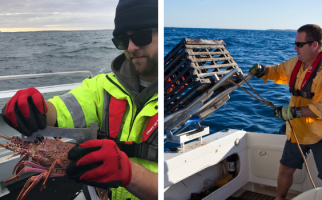
Banner Image (left): Fishin Wishin Life
Feature Image: Matt Barnes

